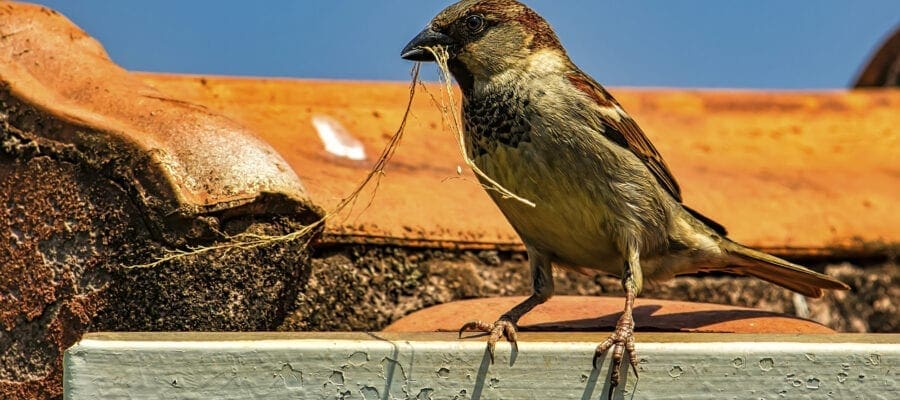Top ten signs of it in your garden
• Spring has sprung, and the RSPB has created a list of ‘top ten signs of spring’ that you can see from your own home!
• Join in the conversation #NatureIsOpen
• Connection to nature has a positive impact on both physical health and emotional wellbeing.
Spring is now here, and there are signs of it all around us – birds singing, flowers blooming, and being able to go outside without five layers on!
The RSPB has collected top ten signs of spring that you may see from your garden:
1. Birds building nests – birds only spend a small part of the year making nests, so now is the time to be on the look-out. They use a huge range of materials!
– Chaffinches use sticky cobwebs to make pads on the branches, forming ‘anchors’ for their nest
– Long-tailed tits create a pouch-shaped home with as many as 2,000 feathers inside as padding
– Blackbirds and house martins use mud to make their nests
– Starlings love fresh cut green leaves – nothing goes to waste.
2. Hedgehogs waking up – while birds are making their beds, hedgehogs are just getting out of theirs. They come out of hibernation around March/April and are on the hunt for food and water – they’ll have lost around a third of their weight during hibernation! You can help them out by putting out a clean bowl of water, or a meat-based cat or dog food.
3. Migrants returning – spring sees the return of migrant birds to the UK. In your garden you may well be able to admire swooping swifts, marvel at sand martins balancing on telephone wires, or hear the nightingales chirping call.
4. Bats waking up – you may start to see bats coming out to feast on insects in your garden – a single pipistrelle bat can eat 3,000 gnats in one night!
5. Bluebells – if you have any bluebells around, now is the best time of year to see them burst into bloom, transforming a brown, dormant ground into a sea of blue.
6. Dragonflies return – the common darter dragonfly will start to come out in force. They are regular visitors to gardens, perching on vegetation, walls, fences, and even garden canes and washing lines as they wait to leap out at their prey – which, for a common darter dragonfly, is pretty much anything they can catch.
7. Frogspawn in ponds/toadlets emerging – If you have a pond in your garden, you may start to see tiny toadlets emerging. They love some juicy insect larvae, as well as spiders, slugs and worms, so you can create a true toad haven by making your garden as insect-friendly as possible – leaving your leaves to dissolve into the ground rather than raking them up, planting wildflowers, or building a bug hotel!
8. Blossoms – if you’ve got any crab apple or cherry trees in your garden they’ll be starting to burst into colour! Bees love crab apple’s beautiful pink blossoms, while the cherry tree blossom holds both the male and reproductive parts in the same flower.
9. Grass snakes waking up – Grass snakes also start to wake up from hibernation around now to look for a mate, so you might see one in your garden or the local park. The females will lay her eggs (sometimes up to 40!) in places such as compost heaps where the rotting vegetation can keep the eggs nice and warm, so be sure to check any piles in your garden before moving them.
10. Dawn chorus for early risers on light mornings – from about March to July the birds are looking to defend their territories and attract a mate – which means an early start! The first birds start singing about an hour before sunrise, with skylarks, song thrushes, robins and blackbirds starting off the choir. The early day is perfect for birds – it’s dim enough that predators can’t see them, and the still air can carry song about 20 times as far. There’s always the RSPB bird radio if you can’t get enough and want to listen to birdsong throughout the day!
For more inspiration on how to enjoy nature from home, please visit the RSPB website.





